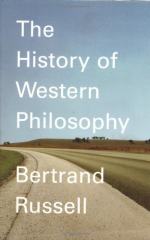|
This section contains 722 words (approx. 2 pages at 400 words per page) |

|
Book 2: Chapter 9, Ecclesiastical Reform in the Eleventh Century Summary and Analysis
Europe made progress after the fall of the Western Empire in the eleventh century, although the progress during the Carolingian renaissance was not solid. Monastic reform initiated improvement, the Saracens were expelled from Sicily, and the Hungarians became Christians. The progress was mainly exerted through the separation between laity and clergy.
Priests formed separate castes in Egypt, Babylonia, and Persia, unlike in Greece and Rome. The distinction between clergy and laity widened while the separation of the clergy was doctrinal and political. Certain customs such as marriages had to be performed only through clergy who could determine the after life through excommunication.
The powers of the clergy gave them victory, but their power was limited through passions and divisions. The pope was exposed to the threat of...
(read more from the Book 2: Chapter 9, Ecclesiastical Reform in the Eleventh Century Summary)
|
This section contains 722 words (approx. 2 pages at 400 words per page) |

|




